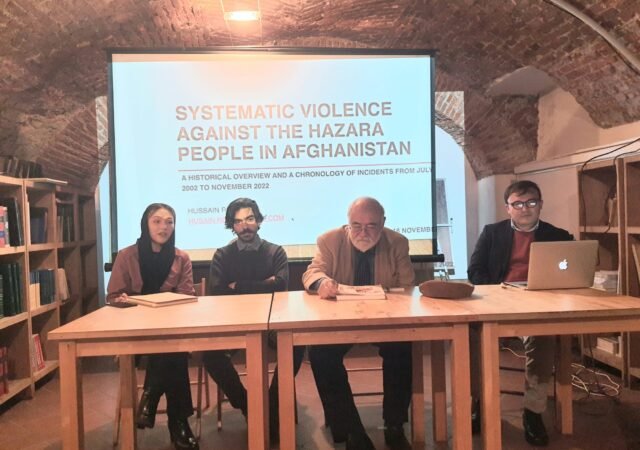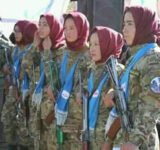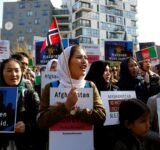OFTEN when we hear about Afghanistan, words such as destruction, war, poverty, bloodshed and death are used to describe the country.
Before the country’s civil war which began in April 1992, Afghanistan was blossoming and people of different ethnic groups were accorded their human rights, including access to education and jobs that were not available to them before, allowing for families to better sustain themselves.
However, when the civil war broke out, different warlords comprising of the mojahedin, and later the Taliban, occupied Afghanistan, implementing their own brutal laws and extreme religious views.
The Taliban rule of the late 1990s came to an end in 2001, after September 11, when the US invaded the country along with its Nato allies, under the pretext of bringing peace, stability and freedom to all Afghans, especially women.
Today, sadly, the situation has not vastly improved, with instability still plaguing the country almost two decades after Nato troops arrived in Afghanistan.
And for one group of Afghans, the Hazaras, the conflict has become even more intolerable, with their deaths and suffering continuing to rise.
The Hazara people are one of 50 ethnic groups in Afghanistan, but can also be found in Iran and Pakistan, with the majority being adherents of Shia Islam. They speak Dari (a dialect of Farsi) and/or Hazaragi.
Many people ask where the Hazaras originate from, and that is a difficult question to answer, because no-one really knows their origins and there is a lot of speculation among scholars and historians.
Many academics and political scientists claim that the Hazaras are descendants of Moghol soldiers who came to Afghanistan with Genghis Khan’s army in the 13th century; this is also the most accepted theory about their descent.
Others argue that the Hazaras are mixed descendants of Turko-Mogholi war settlers, who built and lived in army bases in central Afghanistan.
However, what distinguishes the Hazaras from other groups are their distinct ethnic features.
In Afghanistan, the Hazara people are the third-largest ethnic group after Pashtuns and Tajiks, but as a result of discrimination and segregationist policies by many different Afghan rulers, the Hazara people have remained one of the most underdeveloped groups, politically, economically and socially in the country.
Until the 1890s, the Hazara people were autonomous and in full control of all areas within their region known as Hazarajat, which lies mostly to the west and north-west of Kabul.
However, after the 1890s, they were ruthlessly subjugated, at the behest of the Sunni king Abdur Rahman Khan, who issued a religious decree declaring Shias to be infidels and thus legitimate targets in war.
From 1888-93, a period known as the Hazara uprisings, the well-known scholar Sayed Askar Mousavi argues that Amir Abdur Rahman and his army massacred or forced out more than half of the Hazara population.
It was not until 1923 that Hazara slavery was abolished, but still the community were excluded from contributing to, and benefiting from, the development of Afghanistan, and were not viewed as equal citizens.
Up until this day the Hazaras are under continued attack by two terrorist groups, the Taliban and Isis (both are Sunni Islamic fundamentalist organisations) and are also neglected by the Afghan government.
Last year in October, the Taliban launched an offensive and attack in Hazarajat.
It first began in Uruzgan province, and then continued on to Jaghori and Malistan, two districts in Ghazni province. These were two provinces considered to be among the safest areas in Afghanistan for the Hazara people.
Jaghori’s 600,000 people are poor and live in an isolated area that does not have paved roads or electricity lines, but has an abundance of orchards of almond trees and apple trees.
The province had been known for being peaceful. Specifically, the implementation of educational schemes for both sexes has been a successful example for the rest of the country. School attendance is almost universal among girls and much higher than the Afghan average for boys.
When the Taliban attacked last year, the area’s successful schools were burned down, houses were looted and destroyed, as well as communications antennas being knocked down. Hundreds of civilians were killed and thousands internally displaced.
Those who managed to escape either went with cars over dusty mountain roads or fled by foot in freezing temperatures.
Most families fled to cities like Ghazni, Bamyan and Kabul, where there was little to no food, medicine or shelter. While the inhabitants of these cities extended their helping hands, the government turned a blind eye towards these helpless individuals for weeks, until eventually the army arrived and assisted the Hazara population.
Last Saturday, a wedding took place in the Dubai City wedding hall in western Kabul, in a predominately Hazara neighbourhood.
While children, women and men were dancing to their favourite Afghan wedding songs at the joyous occasion, a suicide bomber attacked the wedding, where over 80 guests were killed and over 180 injured.
Isis claimed responsibility for the attack, the deadliest to hit the capital in 2019.
Interestingly, these attacks are mentioned in the media as attacks on the Afghan people; media framing is important here, given that historically the term Afghan was synonymous with Pashtun, and is still used as an exclusionary term by some Pashtun nationalists.
This is problematic as an entire country composed of different ethnic groups is being referred to by a term which signals a monopoly of power and the enforcement of an Afghan identity on non-Afghans, as well as denying the multitude of identities of the diverse communities within the country.
Therefore, it is important to call these attacks what they are — a racially motivated attack on a minority, who are subject to institutional oppression, marginalisation, persecution and massacres.
The group of people who have benefitted from these oppressive structures are now given platforms in Europe and the US, and they refuse to acknowledge the prejudice fuelling the attacks, and in turn claiming that there is no racism in Afghan society.
As long as such Afghan journalists and so-called experts are given public platforms where they refuse to acknowledge the divisions in Afghan society such as race and ethnicity, while the government does nothing to acknowledge the targeting of Hazaras by the Taliban and Isis, these people are inadvertently undermining the true nature of the suffering being inflicted on the Hazara people.
Of course there are attacks in which non-Hazaras are victims of suicide bombings, but they are mostly in the form of “collateral damage” during attacks on the government and the US and Nato forces.
Other ethnic groups in Afghanistan suffer from poverty and conflict, but they are not solely targeted based on their ethnicity. They have not been pushed to the bottom of the social hierarchy because of their ethnicity, culture and religion.
In order to move forward, it is important to recognise and understand the history of the Hazara people.
The Hazaras are not merely attacked because of their religious beliefs, otherwise there would also be regular attacks against non-Hazara Shias.
The Hazara people are undeniably attacked because of their ethnicity. They are not seen as “real” Afghans.
The answer to why the Hazara people have been targeted by different Afghan governments may lie in the fact that they are the central ethnic group that could potentially challenge and threaten the country’s dominant powers.
This in part explains the decades of social isolation, displacement, oppression and persecution of the Hazara people by successive Afghan regimes: if we do not denounce this a collective, we are also to blame for its continuation.
source : morningstaronline.co.uk














